
Tourists in Dublin are unlikely to get bored wide range of well-known attractions such as the Guinness Storehouse, the Book of Kells, the Ha’penny Bridge and the National Leprechaun Museum.
Yet, there are many charming, weird, offbeat, and sometimes simply downright strange places in Dublin that are entirely worth visiting (or doing), but usually are not on most tourist itineraries.
If you are yearning for something a little different, quirky or just peculiar, I have compiled the ultimate list of unusual and unique sights in Dublin for you.
I am certain that these unusual sights will make your trip to Dublin absolutely unforgettable.
Table of Contents
- 1 The Cat and the Rat in Christ Church Cathedral
- 2 The Relics of St. Valentine in Whitefriar Street Church
- 3 Father Pat Noise Plaque on O’Connell Bridge
- 4 The Hungry Tree on Constitution Hill
- 5 The 40 Steps at St. Audoen’s Church
- 6 Napoleon’s Toothbrush at the Royal College of Physicians of Ireland
- 7 The Taxi Drivers’ Shrine on Cathal Brugha Street
- 8 Oscar Wilde Sculpture in Merrion Square Park
- 9 Sunlight Chambers’ Friezes
The Cat and the Rat in Christ Church Cathedral
Sometimes there are situations in life that can best be described as lose-lose situations and this is one of them.
In Christ Church Cathedral, a mummified cat and a mummified rat were found in an organ pipe during the maintenance of the organ in 1860. Dubliners lovingly call the pair Tom and Jerry.
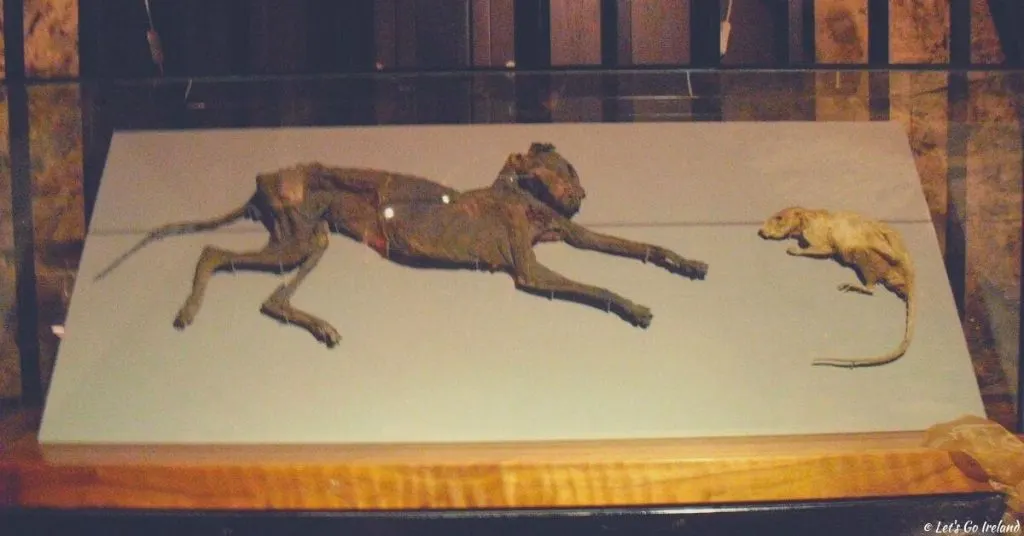
One can only assume that in the process of a chase, the cat was more focused on its prey rather than the width of the organ pipe and managed to get stuck resulting in both animals meeting their untimely deaths together in the confined space.
The dryness in the organ pipe helped to preserve the animal remains and the now mummified specimens can be viewed in a glass case.
The cat and the rat even found its way into James Joyce’s Finnegans Wake (1939), where a character is described as “stuck as that cat to that mouse in that tube of the Christchurch organ”.
Let’s forgive Joyce for not being able to distinguish a mouse from rat here.
The Relics of St. Valentine in Whitefriar Street Church
Stop in the Name of Love! Now I will have that song going around in my head the entire day!
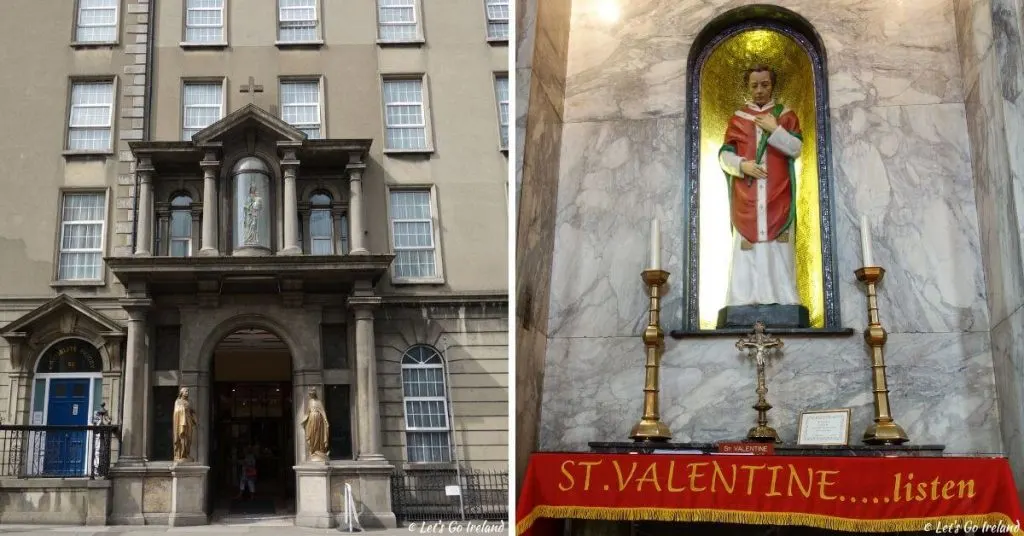
Granted, the commercialization of St. Valentine’s Day is not for everyone. However, if you are disenchanted by dating apps and feel the need to ask St. Valentine a favor, why not do it in person and visit his remains in Dublin?
His relics lie in the Whitefriar Street Church right in the city center.
Legend has it that the Irish priest John Spratt visited Rome in 1800.
As a commendation of his work, Pope Gregory XVI. agreed to allow him to take some ashes and blood of St. Valentine back to Ireland.
The relics have been in Dublin since 1836 and have been on display in the church since the 1950s.
Ever since, couples have been making pilgrimages to Whitefriar Street Church celebrating their personal St. Valentine’s Day.
Father Pat Noise Plaque on O’Connell Bridge
Right in the center of the city, this is an easy sight to see and will give you a little bit of insight in to Irish humor.
When you are heading for O’Connell Street, on the left side of the O’Connell Bridge you will find a plaque for Fr. Pat Noise, who died under strange circumstances on August 10, 1919.
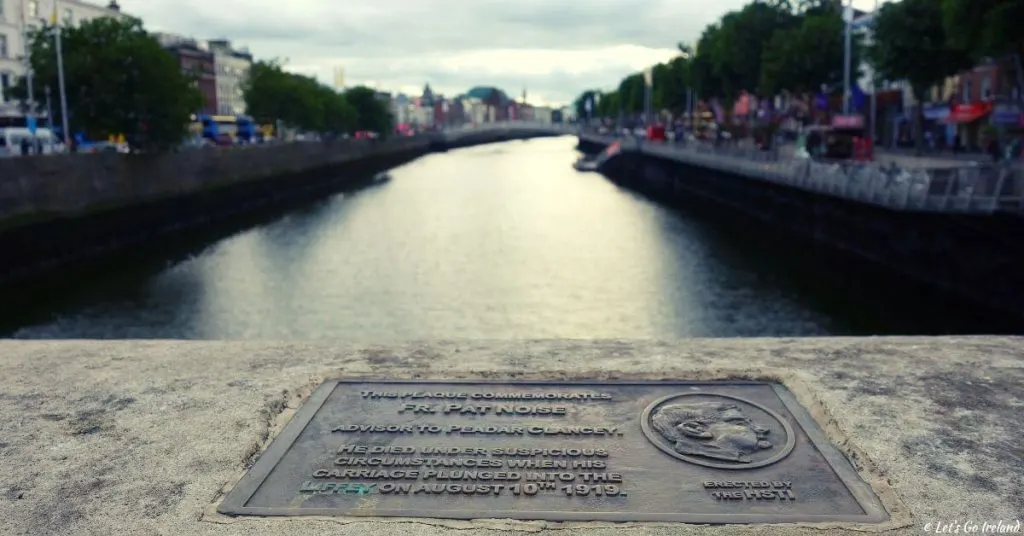
A tragic case from 100 years ago, but nothing else special, right? The funny thing is though, that Fr. Pat Noise never really existed.
The plaque was installed without permission sometime in 2004 (by ‘This HSTI’ – a playful anagram that allows for various interpretations).
It took the Dublin City Council two years to even hear about its existence. One rumor hints that the plaque was a criticism of Dublin’s waste of money during the time of the Celtic Tiger boom years, when commemorative plaques and the like were set up for everyone and everything.
The first time the Fr. Pat Noise plaque was removed it reappeared again after a short amount of time.
However, when the city council threatened to have the plaque removed for the second time, there was a city-wide protest.
Now this “vandalism” is tolerated and the Dubliners are proud of the memory of their fictional fellow citizen.
The Hungry Tree on Constitution Hill
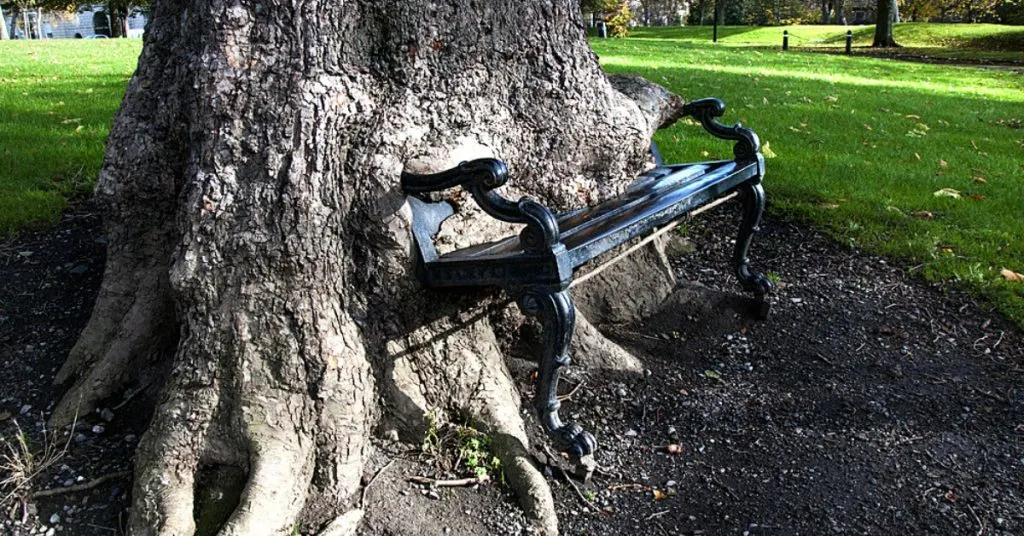
If you are looking for an unusual Instagram shot of Dublin, then this is definitely one to keep in mind.
On the grounds of Ireland’s oldest law faculty, the King’s Inn, stands a gluttonous tree and has been slowly, but steadily engulfing a black park bench for years.
The Hungry Tree, a 100-year-old London plane, is already something of a celebrity in Ireland.
The “Tree Council of Ireland”, Ireland’s nature conservation authority for trees, has included it in their list of ‘Heritage Trees’ on the grounds that it is an “Arboricultural Curiosity”.
That’s absolutely true and definitely worth a visit.
The 40 Steps at St. Audoen’s Church
How long did it take to get to hell in Dublin in the early 19th century? Only 40 steps!
The medieval shortcut to get to St Audoen’s Church was from Corn Hill (the Dublin grain market) to an area full of brothels and bars that used to be called “Hell”.
There are many stories around this area, but those involving one particular woman are worth mentioning.
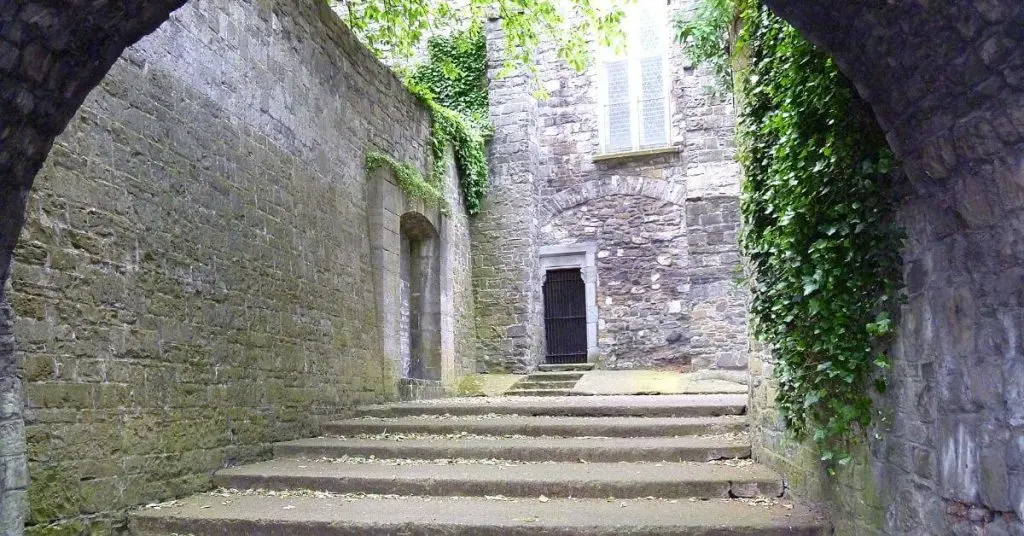
(Photo: CC BY-SA Michael Dibb)
In the 18th century, there lived a brothel owner Darkey Kelly, who became pregnant by the Sheriff of Dublin.
The Sheriff rejected Kelly’s accusations of fathering the child and accused Kelly of being a witch (as one did at the time!).
So she was burned at a stake in 1761. Another story says that Darkey Kelly was a mass murderer (the bones of five people were allegedly found under her brothel).
Since her death, the spirit of Darkey Kelly is now spotted at regular intervals on the 40 steps.
However, whether you believe in these ghost stories or not, you may well detect a strange vibe when you visit the 40 steps.
Expert Tip: It’s best not to come here for a first date.
Napoleon’s Toothbrush at the Royal College of Physicians of Ireland
Did you know that Napoleon’s doctor when he was in exile on the island of St. Helena was Irish?
In fact, Barry Edward O’Meara and Napoleon even became friends. Napoleon cleverly advised O’Meara to publish a diary with impressions of his last years and day to day life on the island after his death in order to become wealthy.
In addition to this bit of advice Napoleon also gave him some of his personal belongings, including a toothbrush and a snuff box.
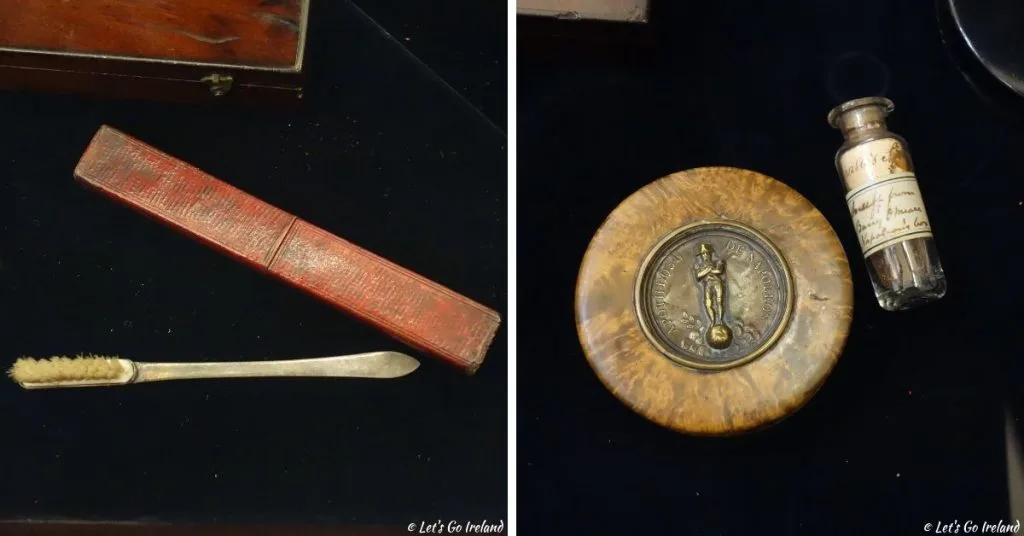
As it turns out Napoleon was indeed right. The published diary was a big success and O’Meara did become rich and famous.
After his death, the utensils spread all over the world, but were recovered by an Irish surgeon, and when he died, they were bequeathed to the Royal College of Physicians of Ireland in Dublin.
This can now be viewed by anyone. However, a visit is only possible by registering beforehand with the archivist.
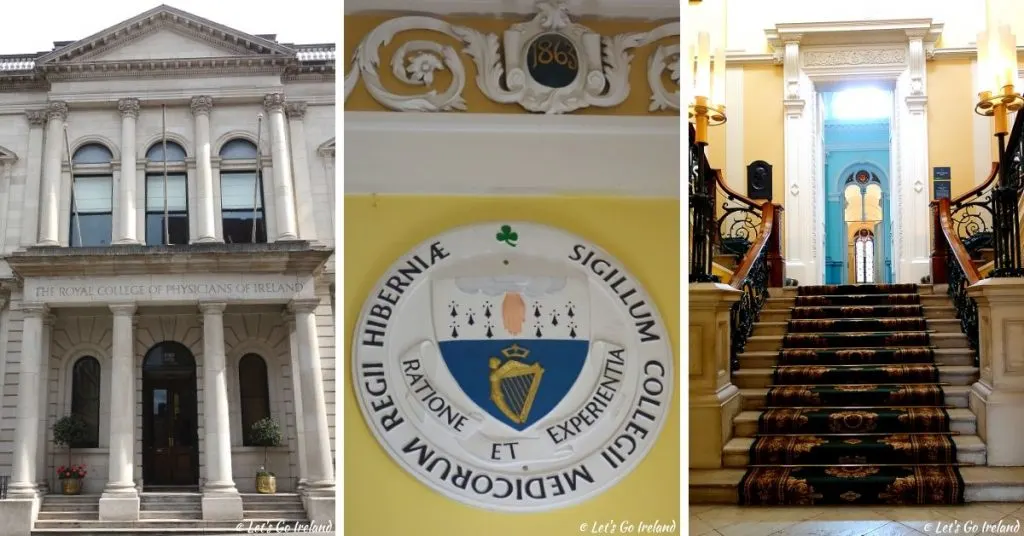
The Taxi Drivers’ Shrine on Cathal Brugha Street
At the northern O’Connell Street and the branching Cathal Brugha Street you can see the taxi drivers, the smoking, reading, talking to each other waiting for their next ride.
In the middle of the group on Cathal Brugha Street stands a Jesus statue in a plastic cabinet in a shrine. This is not necessarily where you would expect to find a remnant from the Irish Civil War.
The text on the shrine in less than perfect grammar reads: “May God bless the taxi driver’s, keep them safe and watch over them on the journey there”.
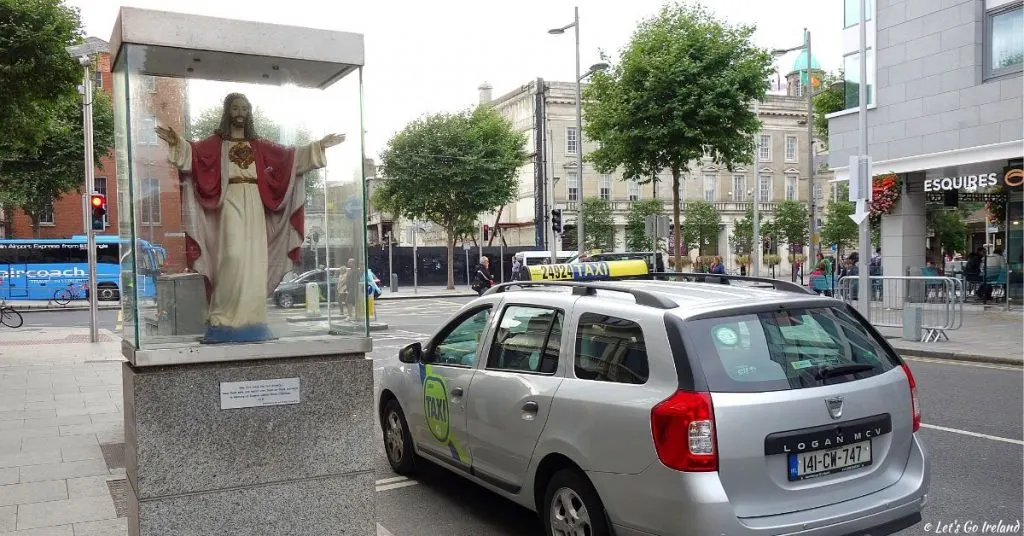
Legend has it that during the Civil War (1922-1923) horse-drawn carriages rescued furniture and other items from the surrounding looting shops.
These items were collected in the middle of O’Connell Street.
The only thing that has never found a buyer or owner was the statue of Jesus.
The taxi drivers took care of the statue and have been looking after it ever since and so it has stood in the same place for nearly 100 years.
I particularly like this story as it gives little insight into a specific (sub-) culture of Dublin.
Oscar Wilde Sculpture in Merrion Square Park
This is a sculpture as extravagant as the writer himself! Since 1997, Merrion Square Park, (which is located at the very heart of Dublin city), has been home to this lascivious and relaxed sculpture memorial of Oscar Wilde.
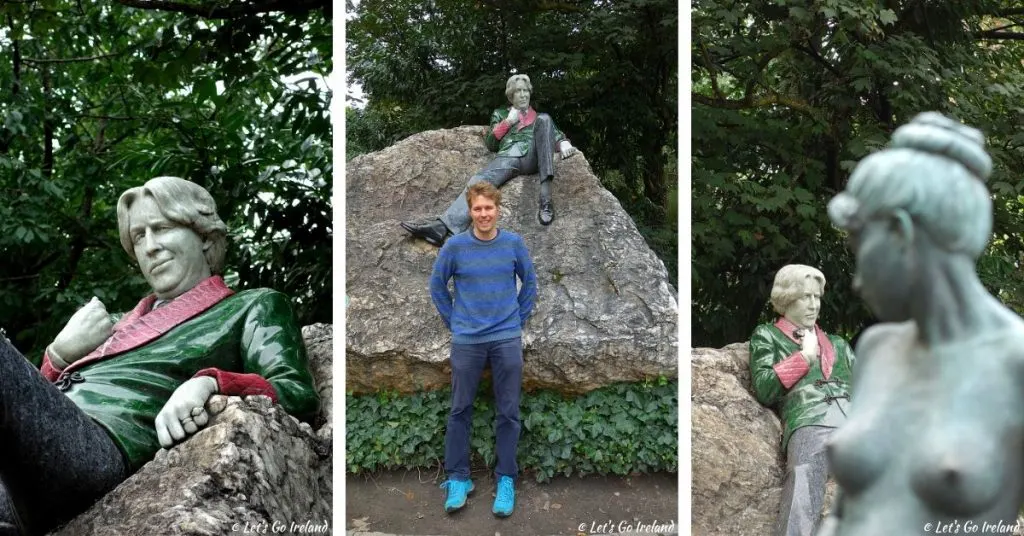
What is particularly noteworthy about this sculpture is material with which it was made: the head is made of white jadeite, the jacket is made of green jade from Canada and pink Thulit from Norway, the trousers made of bluish granite from Norway and the shoes from Indian Charkonite.
This cosmopolitan color combination is probably to Wilde’s taste!
Dubliners have given the sculpture its own name in reference to Wild’s sexual affection: “The Quare in the Square” or “The Queer with the Empty”.
His relationship to Ireland can be very simply described as complex and difficult, something that may be reflected in the features of the sculpture – half laughing, half crying, funny and tragic at the same time.
He once said that his Irish accent was the first thing he had forgotten at Oxford, but elsewhere he noted emphatically that he was not English, but Irish and that meant something quite different (‘quite another thing’).
Born in Dublin, Oscar Wilde grew up in Merrion Square and walked the very short distance to Trinity College Dublin.
From his position on the stone in Merrion Square Park, he is able to see his childhood house, no. 1 Merrion Square.
Sunlight Chambers’ Friezes
Do you fancy seeing a really unusual building in Dublin?
In that case, do not miss the “Sunlight Chambers” building on the corner of Parliament Street (right on the river Liffey in the west of Temple Bar).
You could almost miss it, but if you look up, you will see an Italian-style two-story building decorated with beautiful colorful ceramic frescoes.
For a moment, you may think that you have been transported to the Mediterranean. (But only for a very short moment!).
This is not a classic scene that you might find in Tuscany, but instead celebrates the art of washing and hygiene.
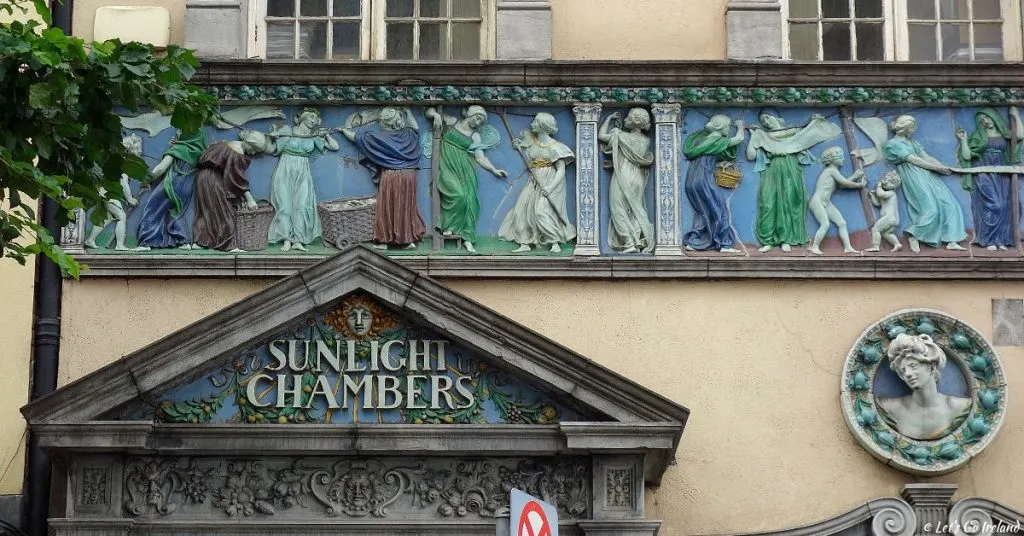
The British Lever Brothers, who built an empire as a soap and detergent manufacturer from the 1880s had their Irish headquarters here.
The building was built in the Italian style between 1899 and 1901 under the direction of Liverpudlian architect Edward Ould.
The sculptor and potter Conrad Dressler created the frescoes which tell the story of hygiene.
It’s worth it to just watch for a few minutes and watch the washing women, water carriers and soap traders at work.
Incidentally, the name ‘Sunlight’ comes from the incredibly successful soap of the same name, which was the first vegetable oil-based soap.

(Irish and Celtic Culture Aficionado, Literature Buff)
Nils Beese co-founded LetsGoIreland.com driven by his love for Ireland’s rich culture and captivating Celtic traditions. Holding a PhD in Irish literature, he’s spent time in Dublin and Cork, immersing himself in local tales and traditions. As a lecturer and guide, Nils seamlessly blends his German roots with his deep appreciation for Irish and Celtic culture. Through his writings, readers are invited into the vibrant and enchanting world of Irish stories and Celtic lore.
